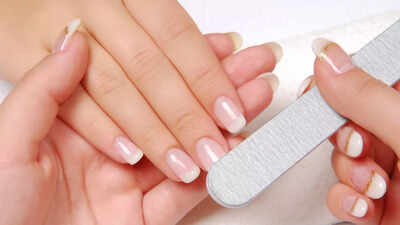ARTICLE AD BOX

Nail hygiene is a vital aspect of personal grooming that reflects both your health and self-care habits. Healthy nails not only look neat and attractive but also help prevent infections, discomfort, and other nail-related issues.
Neglecting nail care can lead to brittleness, breakage, fungal infections, and bacterial growth, affecting both fingernails and toe nails. Maintaining nail health is not complicated; it requires simple daily practices such as cleaning, trimming, moisturising, and practising safe habits. Small adjustments, like avoiding nail-biting or using sterilised tools for manicures and pedicures, can make a significant difference over time.
By adopting mindful nail care routines, you can strengthen your nails, protect them from infections, and ensure they remain healthy, resilient, and visually appealing year-round, supporting both hygiene and overall well-being.
5 essential nail hygiene tips for healthy, strong, and infection-free nails
Keep your nails clean and dry
Keeping your nails clean and dry is the foundation of good nail hygiene. Dirt, bacteria, and fungi can accumulate under nails, especially when hands are exposed to moisture for long periods.
Regular handwashing with soap and water is crucial, and using a soft nail brush to gently scrub underneath the nails helps remove any trapped debris. After washing, always dry your nails thoroughly, as moisture creates a favourable environment for fungal and bacterial growth.
Limiting prolonged exposure to water, detergents, and harsh chemicals also prevents weakening of the nails, helping them stay strong and less prone to infection.
Trim and shape nails regularly
Regular trimming and shaping are not only aesthetic practices but also vital for hygiene. Long or jagged nails can trap dirt and bacteria, increasing the risk of infections. They are also more likely to break or snag, which can be painful and create entry points for microbes. Use a nail clipper or manicure scissors to trim nails straight across, helping to prevent ingrown nails. Smooth out the edges with a nail file to avoid snags and cracks.
Avoid cutting nails too short or digging into the nail bed, as this can lead to irritation or infections. Consistent trimming keeps nails neat, strong, and easy to maintain.
Moisturise your nails and cuticles
Dry nails and cuticles can become brittle, cracked, and more susceptible to infection. Moisturising is essential to maintain nail flexibility and overall health. Apply a nourishing hand cream or cuticle oil after washing hands or showering, gently massaging it into the nails, cuticles, and surrounding skin.
Look for products containing natural oils such as jojoba, almond, or vitamin E, which help strengthen nails while promoting healthy growth.
Regular moisturisation prevents dryness, reduces the likelihood of hangnails, and keeps nails soft, flexible, and less prone to breaking.
Avoid biting nails or picking at cuticles
Nail-biting and picking at cuticles are habits that can damage nails and the surrounding skin. These actions introduce bacteria and fungi from the mouth or fingers, increasing the risk of infections.
To break these habits, keep your nails trimmed short or try bitter-tasting nail polishes designed to discourage biting. Engaging your hands in stress-relieving activities or using a fidget tool can also help reduce the urge.
Avoid pushing back or cutting cuticles with sharp tools, as this can create cuts and provide an entry point for microbes. Protecting your nails from these habits is key to maintaining strong, healthy, and infection-free nails.
Practice safe nail care with manicures and pedicures
Manicures and pedicures are popular ways to enhance nail appearance, but they must be done safely to avoid infections. When applying nail polish, choose non-toxic products and avoid overusing harsh nail polish removers that can dry out nails. Give your nails occasional breaks from polish to allow them to “breathe.” Keep toe nails clean and trimmed to prevent fungal infections, especially around the nail beds. Always use clean and sterilised tools, whether at home or in a salon, and avoid sharing instruments to prevent the spread of bacteria and fungi.
Safe and regular nail care helps maintain hygiene while enhancing the natural beauty of your nails.Maintaining nail hygiene is more than just a cosmetic practice, it is an essential part of overall health. By keeping nails clean and dry, trimming and shaping them regularly, moisturising nails and cuticles, avoiding biting or picking, and practising safe manicures and pedicures, you can protect your nails from infections, strengthen them, and keep them looking attractive. A consistent, mindful nail care routine ensures your nails remain healthy, strong, and beautiful throughout the year.
Even small daily habits make a big difference in preserving nail health and hygiene.Disclaimer: This article is for general informational purposes only and is not a substitute for professional medical advice, diagnosis, or treatment. Always seek the guidance of a qualified healthcare provider regarding any medical condition or lifestyle change.Also Read: Fungal nail infection remedies: How to treat and prevent yellow and brittle toe nails naturally

 4 hours ago
5
4 hours ago
5









 English (US) ·
English (US) ·